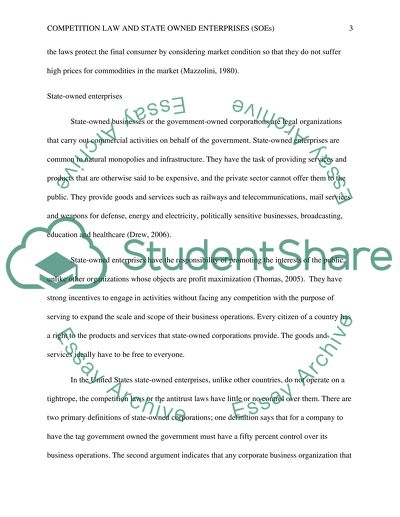Competition law and State Owned Enterprises (SOEs) Research Paper. Retrieved from https://studentshare.org/law/1685131-competition-law-and-state-owned-enterprises-soes
Competition Law and State Owned Enterprises (SOEs) Research Paper. https://studentshare.org/law/1685131-competition-law-and-state-owned-enterprises-soes.


